 |
 |
 |
 |
 |
 |
| |
 |
|
 |
 |
 |
  |
  |
 |
 |
 |
 |
|
 |
 |
Angelo Mangiarotti
|
|
* Milan [Milano], Italy, 26 February 1921 |
|
+ Milan [Milano], Italy, 30 June 2012 |
| nationality:
italian |
|
 |
|
|
|
|
|
 |
 |
 |
BIOGRAPHICAL NOTES |
 |
|  |
|
 |
 |
 |
| |
 |
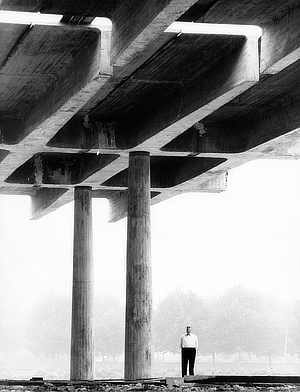 Angelo Mangiarotti was born in Milan on February 26, 1921 and died in Milan on June 30, 2012.
He enrolled in the Faculty of Architecture of the Politecnico University of Milan at the beginning of the war and continued his studies from 1943 to 1945 at the Campo Universitario Italiano at the École Polytechnique in Lausanne. In 1948 he graduated in Architecture from the Politecnico University of Milan. From 1946 to 1953, while embarking on his professional career, he carried out intense activities as an intellectual in close contact with Ernesto Nathan Rogers, working among other things on both the 8th and the 9th Triennale. He attended the Illinois Institute of Technology in Chicago in 1953-4 and worked professionally in the United States. During this period he met Walter Gropius and Konrad Wachsmann, Frank Lloyd Wright, and Mies van der Rohe. In 1955 he opened a firm in Milan, in association with Bruno Morassutti until 1961, and later continued on his own until the end of his career.
In 1989 he set up Mangiarotti & Associates, an office in Tokyo. From 1986 to 1992 he was the art director for Colle Cristallerie in Colle Val d’Elsa. Mangiarotti, whose works are published in books, technical journals and newspapers, always combined his professional work with intense teaching activities in Italy and abroad.
Over the years, he lectured at many international universities, including the Institute of Design of the Illinois Institute of Technology in Chicago (1953-4), the Istituto Superiore di Disegno Industriale in Venice (1963-4), the Institute of Technology in Lausanne (1974), and the Faculty of Architecture of the Politecnico University in Milan (1989-90 and 1997).
Mangiarotti won numerous awards during his career, including the In/Arch Lombardia award (1962), the AIP (Associazione Italiana Prefabbricatori) award (1972), the Prix Européen de la Construction Métallique (1979), and the ADI Golden Award for Lifetime Achievement (1994).
He also received honorary degrees in Engineering from the Faculty of Architecture of the Technische Universität of Munich (1998) and in Industrial Design from the Faculty of Architecture of the Politecnico University of Milan (2002). |
|
 |
 |
 |
AWARDS |
 |
|  |
|
 |
 |
 |
|
|
 |
|
|
|
 |
Compasso d'Oro alla Carriera
ADI Associazione per il Disegno Industriale |
|
 |
 |
 |
BUILDINGS |
 |
|
 |
|
 |
 |
 |
|
|
 |
|
|
  Italy [Italia]
Italy [Italia]
» Milan [Milano] |
|
|
|
|
 |
|
|
  Italy [Italia]
Italy [Italia]
» Milan [Milano] |
|
|
|
|
 |
|
|
  Italy [Italia]
Italy [Italia]
» Milan [Milano] |
|
|
|
|
 |
|
|
  Italy [Italia]
Italy [Italia]
» Milan [Milano] |
|
|
|
|
 |
|
|
  Italy [Italia]
Italy [Italia]
» Giussano |
|
|
|
|
 |
|
|
  Italy [Italia]
Italy [Italia]
» Milan [Milano] |
|
|
|
|
 |
|
|
  Italy [Italia]
Italy [Italia]
» Arosio |
|
|
|
|
 |
|
|
  Italy [Italia]
Italy [Italia]
» Giussano |
|
|
|
|
 |
|
|
  Italy [Italia]
Italy [Italia]
» Monza |
|
|
|
|
 |
|
|
  Italy [Italia]
Italy [Italia]
» Alzate Brianza |
|
|
|
|
 |
|
|
  Italy [Italia]
Italy [Italia]
» Turate |
|
|
|
|
 |
|
|
  Italy [Italia]
Italy [Italia]
» Cinisello Balsamo |
|
|
|
|
 |
|
|
  Italy [Italia]
Italy [Italia]
» Monza |
|
|
|
|
 |
|
|
  Italy [Italia]
Italy [Italia]
» Milan [Milano] |
|
|
|
|
 |
|
|
  Italy [Italia]
Italy [Italia]
» Milan [Milano] |
|
|
|
|
 |
|
|
  Italy [Italia]
Italy [Italia]
» Milan [Milano] |
|
|
|
|
 |
|
|
  Italy [Italia]
Italy [Italia]
» Baranzate |
|
|
 |
 |
 |
 |
BIBLIOGRAPHY |
 |
|
|
 |
|
 |
 |
 |
 |
 |
 |
WRITINGS
ABOUT THE ARCHITECT |
 |
|
|
 |
Luciano Caramel, Il DNA della scultura. Angelo Mangiarotti, Internazionale Marmi e Macchine, Carrara 1999
review: Mario Antonio Arnaboldi, "Mangiarotti scultore", L'Arca 142, novembre/november 1999 [Musei/Museums], "l'Arca2" p. 142 |
|
|
Luciano Caramel, Il DNA della scultura. Angelo Mangiarotti, Internazionale Marmi e Macchine, Carrara 1999
review: Mario Antonio Arnaboldi, "Mangiarotti scultore", L'Arca 142, novembre/november 1999 [Musei/Museums], "l'Arca2" p. 142 |
|
|
| Andrea Campioli, "Mangiarotti e Milano/Mangiarotti's Milan", Domus 807, settembre/september 1998 [Creare per l'industria/Creating for industry], "Itinerario/Itinerary" 148 |
|
|
| Guido Nardi, Angelo Mangiarotti, Maggioli Editore, Rimini 1997 |
|
|
| Enrico D. Bona, Angelo Mangiarotti: il processo del costruire, Electa editrice, Milano 1980 |
|
 |
 |
 |
 |
THE ARCHITECT IN CINEMA |
 |
|
|
 |
|
 |
 |
 |
| Title |
 |
|
 |
|
| Directed by |
 |
|
 |
|
| Nationality |
 |
|
 |
|
| Year of production |
 |
|
 |
|
| Cast |
 |
|
 |
| Enrico Davide Bona, François Burkhardt, Konstantin Grcic, Osami Hamaguchi, Motomi Kawakami, Kengo Kuma, Monica Luchi, Mario Memoli, Gwenael Nicolas, Nilo Pasini, Chiara Pampo, Alberto Vintani |
|
| Architect's role |
 |
|
 |
Protagonist
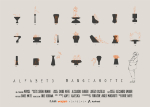 Architect, Designer, Sculptor. Three labels in strict alphabetical order, three facets of a single designer: Angelo Mangiarotti. Certainly one of the most multifaceted and, in some ways, "asymmetrical" personalities on the Italian scene, a promoter of cross-disciplinary research, almost a " solitary fighter" with respect to the evolution of the prevailing schools of thought in post-war Italy. Architect, Designer, Sculptor. Three labels in strict alphabetical order, three facets of a single designer: Angelo Mangiarotti. Certainly one of the most multifaceted and, in some ways, "asymmetrical" personalities on the Italian scene, a promoter of cross-disciplinary research, almost a " solitary fighter" with respect to the evolution of the prevailing schools of thought in post-war Italy.
The documentary film aims to investigate the figure of Angelo Mangiarotti in the context of twentieth-century Italian design culture with particular regard to his attitude and sensitivity to matter and materials. Footage of his architectures and interviews with his collaborators, clients and friends explore points of contact between the various disciplines in which he worked, aiming to reconstruct his profound thought, his inclination toward innovation and the intrinsic poetry of his achievements.
|
|
 |
 |
 |
 |
 |
 |
 |
EXHIBITIONS |
 |
|
|
 |
|
 |
 |
 |
|
|
 |
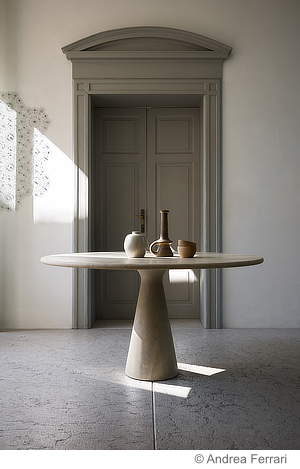 Casa Mangiarotti by Agape e Agapecasa, Napoli [Naples] (Italy), Fondazione Ravaschieri, 6 / 8 october 2023 Casa Mangiarotti by Agape e Agapecasa, Napoli [Naples] (Italy), Fondazione Ravaschieri, 6 / 8 october 2023
Agapecasa, the brand, created by Agape to reissue projects designed by Angelo Mangiarotti, is participating for the first time in EDIT Napoli. The event will stir the heart of Naples from October 6th to 8th with a site-specific installation for EDIT CULT.
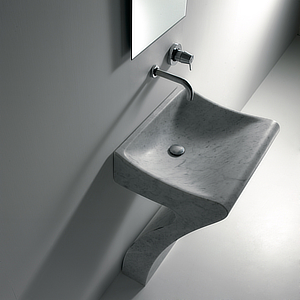 Now in its fifth edition, EDIT Napoli, in addition to its main location at the State Archives, unfolds a vast program with EDIT CULT that includes a series of widespread exhibitions, unveiling both unexpected and iconic locales. Now in its fifth edition, EDIT Napoli, in addition to its main location at the State Archives, unfolds a vast program with EDIT CULT that includes a series of widespread exhibitions, unveiling both unexpected and iconic locales.
For the first time, alongside Agape and Agapecasa, EDIT Napoli ventures into the city's maritime quarter, specifically Fondazione Ravaschieri in Via Riviera di Chiaia 126. Here, from October 6th to 8th, "CASA MANGIAROTTI by Agape and Agapecasa" will be unveiled.
The exhibition, envisioned by architect Camilla Benedini, imagines a home deeply rooted in the design ethos of one of the most multifaceted and intriguing masters of 20th-century design and architecture. It’s a dwelling adorned with timeless furnishings, highlighting a distinctive blend of material, form, technology, and thought that encapsulates Angelo Mangiarotti's unique work.
For instance, the Clizia chair, with its flowing silhouette, stands in stark contrast to the solid, static stone from which it is crafted. The sculptural M table, wholly carved from marble, features a central support that holds a circular top through a mere resting and locking mechanism. Both compositional rigor and poetic essence converge in the Club 44 table, where cement, steel, and marble showcase their full material essence. The Eros table is iconic with its gravity-based joinery. The allure of wood is evident in the minimalist design of Cavalletto, a genius furniture system based on a single construction principle that allows easy module assembly. Complementing the exhibit are the Bjhon and Lito basins, designed by Angelo Mangiarotti for Agape, both exuding a pioneering sculptural presence.
Each design, with its expressive power, material essence, and conceptual depth, establishes a profound connection with the architectural ambiance of the Fondazione, curated by architect Giuliano Andrea dell’Uva.They offer the EDIT CULT audience the opportunity to explore its spaces from a fresh and unique perspective. |
|
|
Angelo Mangiarotti. Quando le strutture prendono forma / When Structures Take Shape, Milano (Italy), Triennale Milano, 27 january / 23 april 2023
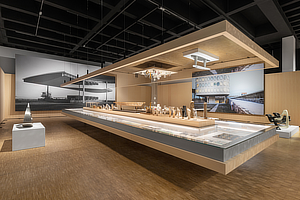 Angelo Mangiarotti. When Structures Take Shape is one of the most complete and comprehensive retrospectives ever devoted to the Milanese architect. It retraces 60-year of career with a wide selection of works, projects, documents and materials, many of which have never been exhibited before. Angelo Mangiarotti. When Structures Take Shape is one of the most complete and comprehensive retrospectives ever devoted to the Milanese architect. It retraces 60-year of career with a wide selection of works, projects, documents and materials, many of which have never been exhibited before.
Stefano Boeri, president of Triennale Milano, explains that “For many years, Triennale Milano has been working on a project devoted to the great Italian masters of design, from Enzo Mari to Ettore Sottsass, to Achille Castiglioni and Pietro Lingeri. The latest is now Angelo Mangiarotti, an eclectic international personality who over the years carried out superb experiments in the fields of architecture, design, sculpture and infrastructure planning. The retrospective we are now putting on once again gives this key figure in the world of twentieth- century design his rightful place in history. We are particularly grateful to Renzo Piano for his participation in this important project – he himself studied under Mangiarotti and worked with him on the 14th International Exhibition in 1968, right here at Triennale.”
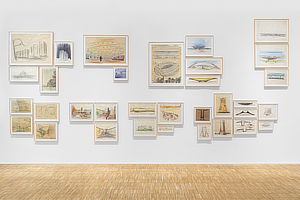 Marco Sammicheli, director of the Museo del Design Italiano of Triennale Milano, says: “Angelo Mangiarotti is a key figure in Italian design and architecture. Some of his designs – including the 4D piece (UniFor EMME3 /Molteni&C, 1966), the IN 301 armchair (Zanotta, 1969), and the Giogali chandelier (Vistosi, 1967) – are part of the permanent collection of the Triennale. This exhibition is a further step on a journey that began in October 2021, when a study day was organised on the centenary of Mangiarotti’s birth. The aim was to promote his work also with regard to the influence he exerted in Japan, the United States and in Europe.” Marco Sammicheli, director of the Museo del Design Italiano of Triennale Milano, says: “Angelo Mangiarotti is a key figure in Italian design and architecture. Some of his designs – including the 4D piece (UniFor EMME3 /Molteni&C, 1966), the IN 301 armchair (Zanotta, 1969), and the Giogali chandelier (Vistosi, 1967) – are part of the permanent collection of the Triennale. This exhibition is a further step on a journey that began in October 2021, when a study day was organised on the centenary of Mangiarotti’s birth. The aim was to promote his work also with regard to the influence he exerted in Japan, the United States and in Europe.”
For Fulvio Irace, the curator of the show, “the exhibition at Triennale is the first opportunity we have had to reveal the great master’s truly complex nature. This has long been ignored in favour of his reputation as a builder who focused on the processes of material culture and on the techniques of prefabrication. While it is true that Mangiarotti reinvented the eternal archetype of the post and lintel, so to speak, using it throughout his career in an astonishing range of variations, it is equally true that – as the exhibition points out – his work contains a creative vein of great plastic and sculptural power, which places it in the domain of art as well as in that of architecture and design.”
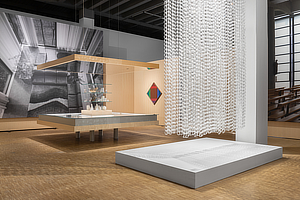 Renzo Piano, who met Mangiarotti while at the Politecnico University of Milan and during work on the 14th Triennale (1968), has assisted in setting up this exhibition, as a way of paying homage to Mangiarotti’s precise way of interpreting the theme of space, which was one of the hallmarks of his work. The installation design created by Ottavio Di Blasi & Partners consists of a series of platforms that reflect the core themes of the exhibition – from node to joint, sculpture to assembly, abstraction to sensuality. Each table displays a series of study models, prototypes, completed works and fragments of work, showing the visitor the wealth and range of Mangiarotti’s experimentation and the workshop- like atmosphere of his studio. Renzo Piano, who met Mangiarotti while at the Politecnico University of Milan and during work on the 14th Triennale (1968), has assisted in setting up this exhibition, as a way of paying homage to Mangiarotti’s precise way of interpreting the theme of space, which was one of the hallmarks of his work. The installation design created by Ottavio Di Blasi & Partners consists of a series of platforms that reflect the core themes of the exhibition – from node to joint, sculpture to assembly, abstraction to sensuality. Each table displays a series of study models, prototypes, completed works and fragments of work, showing the visitor the wealth and range of Mangiarotti’s experimentation and the workshop- like atmosphere of his studio.
The exhibition focuses on the way Mangiarotti approached each design problem as part of a much broader whole, in which experimentation, the characteristics of the material and its static functions went far beyond the laws of structure, involving experiments with materials such as concrete, marble and glass.
The exhibition starts in the large entrance corridor, with a timeline – inspired by the characteristic atmosphere of the architect’s studio – that runs along the left- hand wall. This long coloured wall bears a wealth of images and drawings of Mangiarotti's most important projects, and they are arranged in a way that illustrates his complex creative universe.
A large series of drawings by the architect form a picture gallery on the opposite wall, revealing his great artistic skill and the importance of drawing in his creative process. On entering the hall, the visitor is attracted by huge prints of enlarged photographs that pick out various details of his projects, both internal and external, and is drawn into a journey that illustrates the main themes of his incessant research. With no contrived divisions between disciplines, the visitor can thus observe the continuity that exists in some formal themes and how they are linked together and taken up at different times and on different scales, like recurring notes in a complex musical score. Original archival materials can be seen on the large panels, with documents, drawings, photos and models, while all around is a landscape in which sculptural presences rise up imperiously, revealing the deep artistic vein that was such a feature of his entire life.
In a special room it will also be possible to watch a video projection of Un Angelo su Milano: Mangiarotti e la città, specially created for the exhibition by Francesca Molteni, Muse Factory of Project.
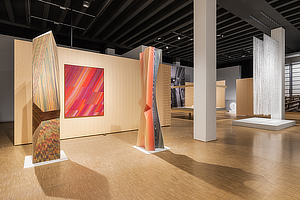 The exhibition Angelo Mangiarotti: When Structures Take Shape offers an overview of the career of the great Milanese architect and designer, who became one of the leading lights in Italian design in the post-war period. One of a generation of creative minds – along with Magistretti, Caccia, Dominioni, Zanuso and others – who helped establish Italian architecture and design around the world, Mangiarotti put his name above all to the design of factories and industries, and to the solid rationality that is often a feature of this type of architecture. In his approach to industrial design, however, he always brought out the artistic talent of a great creative mind, and this exhibition is an opportunity to reveal the great complexity of his work. His reputation, which was more that of a builder, did not recognise this and failed to appreciate his ability to overcome the rigid canons of industrial design and the constraints of concrete. The exhibition Angelo Mangiarotti: When Structures Take Shape offers an overview of the career of the great Milanese architect and designer, who became one of the leading lights in Italian design in the post-war period. One of a generation of creative minds – along with Magistretti, Caccia, Dominioni, Zanuso and others – who helped establish Italian architecture and design around the world, Mangiarotti put his name above all to the design of factories and industries, and to the solid rationality that is often a feature of this type of architecture. In his approach to industrial design, however, he always brought out the artistic talent of a great creative mind, and this exhibition is an opportunity to reveal the great complexity of his work. His reputation, which was more that of a builder, did not recognise this and failed to appreciate his ability to overcome the rigid canons of industrial design and the constraints of concrete.
One of Mangiarotti’s great merits was that he conferred a new level of dignity to the structure of the factory, at the time of Italy’s industrialisation during the economic boom, when the most active areas of production, such as those of the hinterland in Lombardy and Veneto were teeming with “boxes” and industrial sheds. His projects managed to give lustre to the reputation of this type of building, turning them almost into monuments to labour, for they took into account the needs of those who worked there as well as respecting the surrounding landscape. Mangiarotti’s factories became extremely important examples of Italy’s civil construction. They acquired the connotations of the Greek temples that inspired his neat compositions of pillar and post construction with their alternation of imposing columns and pediments, as we see in the Splugen Brau warehouse in Mestre, the SIAG factories in the province of Caserta and in the ELMAG plant in Lissone.
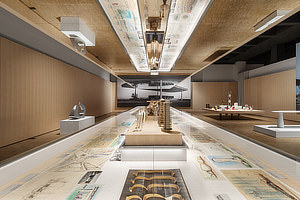 A distinctive and essential feature of Angelo Mangiarotti’s work, which the exhibition focuses on, is also that of prefabrication, a process that the great architect and designer approached in a manner that was totally innovative at the time. Viewing architecture as a free system in which structures can give different shapes and forms to each other in multiple ways – the concept that gives this exhibition its title – Mangiarotti made great use of prefabricated elements that were then assembled on site. The technique, which was not always seen favourably by his contemporaries, concealed a huge dose of creativity behind the apparently monotonous repetition of his construction systems. This led Mangiarotti to design even screws and bolts, and have them patented, to ensure the success of his projects, combining the small scale of design with the grand scale of architecture. In his case, prefabrication was thus anything but synonymous with laziness, but rather an incentive to experiment and to create extempore systems, paving the way for a real form of participatory architecture. A distinctive and essential feature of Angelo Mangiarotti’s work, which the exhibition focuses on, is also that of prefabrication, a process that the great architect and designer approached in a manner that was totally innovative at the time. Viewing architecture as a free system in which structures can give different shapes and forms to each other in multiple ways – the concept that gives this exhibition its title – Mangiarotti made great use of prefabricated elements that were then assembled on site. The technique, which was not always seen favourably by his contemporaries, concealed a huge dose of creativity behind the apparently monotonous repetition of his construction systems. This led Mangiarotti to design even screws and bolts, and have them patented, to ensure the success of his projects, combining the small scale of design with the grand scale of architecture. In his case, prefabrication was thus anything but synonymous with laziness, but rather an incentive to experiment and to create extempore systems, paving the way for a real form of participatory architecture.
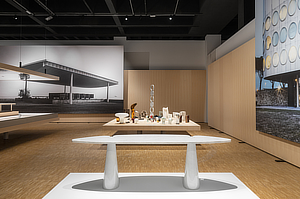 Prefabrication was also a means for bringing about a veritable revolution in the field of design. In his infinite ways of assembling the elements, Mangiarotti found a way of freeing architecture from all its formal excesses, creating almost the ideal of the anonymous architect, an example of restrained Milanese pragmatism. He wanted his projects to act as a stimulus for future generations, for a creative form of reproduction, in a sort of crowdsourcing before its time, handing down to future architects a work method and a series of processes that could be reformulated to meet local needs and fit local contexts rather than appear as the work of some unattainable star. Prefabrication was also a means for bringing about a veritable revolution in the field of design. In his infinite ways of assembling the elements, Mangiarotti found a way of freeing architecture from all its formal excesses, creating almost the ideal of the anonymous architect, an example of restrained Milanese pragmatism. He wanted his projects to act as a stimulus for future generations, for a creative form of reproduction, in a sort of crowdsourcing before its time, handing down to future architects a work method and a series of processes that could be reformulated to meet local needs and fit local contexts rather than appear as the work of some unattainable star.
The overview of Angelo Mangiarotti’s work that we see in the exhibition also devotes much space to the organic approach that was a feature of his work. Objects designed by him, such as the Lesbo lamp and the Secticon clock, reveal another, possibly less known, aspect of Mangiarotti, with their flowing, rounded shapes that can also be seen in his design of buildings. Examples of this can be seen in the pavilion designed for the Triennale in 1968, the design for the Alfa Romeo wind tunnel and the one for the stadium in Catania, as well as the residential complexes in Via Gavirate in San Siro, which he built with Bruno Morassutti – “homes for modern newly-weds”, as the Corriere della Sera put it in 1959.
In all these projects, we can see how the grandeur of the Greek temple is abandoned in favour of forms and techniques that were being tried out in those years, moving in a quite opposite direction, and once again highlighting Angelo Mangiarotti’s great versatility.
He was a master who never stopped studying and learning, not even when, as an exile in Switzerland after the Republic of Salò was declared, he was building the future together with a generation of intellectuals and artists while the war raged on all around. He was a creative mind whose work is permeated by an artistic vein of great plastic and sculptural power, rightfully placing him in the domain of art as well as in that of architecture and design.
Credits
Photos by Melania Dalle Grave, DSL Studio
Courtesy of Triennale Milano
|
|
|
| The Mangiarotti Collection, Brocanelli, Serra Dè Conti, Ancona (Italy), 23 november 2018 / 26 january 2019 |
|
|
| Angelo Mangiarotti: Skilful Reflections, Paris, RBC Mobilier, 4 september / 23 november 2018 |
|
|
Angelo Mangiarotti. La tettonica dell’assemblaggio / The Tectonics of Assembly
Mendrisio (Switzerland), Galleria dell'Accademia di architettura, USI, Palazzo Canavée, 18 september / 25 october 2015
Winterthur (Switzerland), ZHAW Departement Architektur, Gestaltung und Bauingenieurwesen, 4 / 20 october 2016
Geneva [Genève], Les Acacias (Switzerland), Maison de l'Architecture, Pavillon Sicli, 1 / 16 september 2018
Novara (Italy), Il Castello di Novara, 10 may / 2 june 2019
Tokyo, Istituto di Cultura italiana, 13 / 29 september 2019 |
|
|
| La Filosofia del Maestro, Tokyo, Istituto Italiano di Cultura, 14 june / 30 june 2012 |
|
|
| Angelo Mangiarotti designer, Calenzano (FI), Fondazione Anna Querci per il Design, 14 maggio/5 giugno 2010 |
|
|
| Angelo Mangiarotti. Mostra antologica, Mantova, Casa del Mantegna, 12 september/8 november 2009 |
|
|
| Angelo Mangiarotti. Architettura design scultura, Milano, Triennale, 24 january/17 april 2002 |
|
 |
 |
 |
CREDITS |
 |
|
 |
|
 |
 |
 |
| |
 |
Text edit by Triennale Milano
Photo "Angelo Mangiarotti, Deposito Splügen Bräu a Mestre (1967)": Università Iuav di Venezia, Archivio Progetti, fondo Giorgio Casali, courtesy of Triennale Milano
|
|
 |
  |
 |
|
|